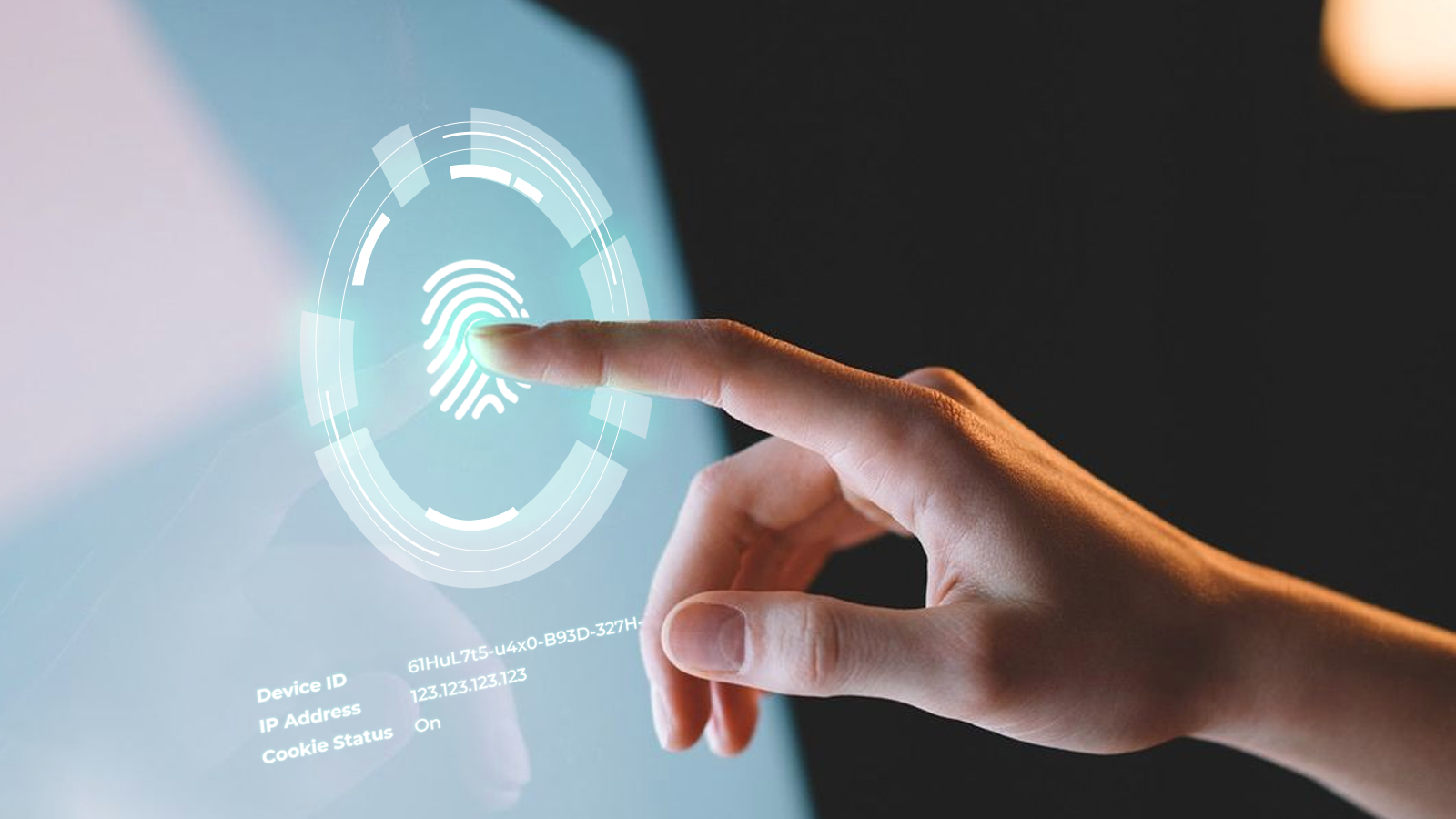Device Fingerprinting: Privacy, Trust, and New Applications
Device fingerprinting prevents fraud with privacy-first techniques, stopping synthetic IDs & protecting customer trust. Learn about new DF applications in 2025.

October 8, 2025
5 minutes
Device fingerprinting prevents fraud with privacy-first techniques, stopping synthetic IDs & protecting customer trust. Learn about new DF applications in 2025.

October 8, 2025
5 minutes



With global fraud losses reaching nearly $5 trillion annually (ACFE Report to the Nations 2024) and APAC banks reporting $221 billion in payment fraud losses (Nasdaq Global Financial Crime Report 2024), organizations need stronger defenses than ever before.
Device fingerprinting has become essential for organizations fighting fraud while maintaining regulatory compliance. This security method identifies unique device attributes to recognize users, detect fraud, and protect online transactions. Device fingerprinting goes beyond simple detection—it ensures privacy compliance, regulatory adherence, and seamless customer experiences.
Device fingerprinting collects technical information about a user's device—operating system, browser type, screen resolution, time zone, and installed plugins—to create a unique profile or "fingerprint." Unlike cookies, these identifiers resist deletion and spoofing, making them more reliable for fraud detection.
Browser fingerprinting focuses on browser-specific details like plugins, fonts, and user agents. Device fingerprinting takes a broader approach, combining system-level and hardware identifiers. This comprehensive method makes it harder to evade and more suitable for fraud detection across banking, payments, and e-commerce platforms.
Typical attributes include:
This data typically excludes personally identifiable information (PII). Instead, it generates a probabilistic match indicating whether a device is trustworthy or suspicious.
How does device fingerprinting enhance privacy compliance? Unlike cookies that track user behavior across sites, device fingerprinting can be designed to prioritize privacy-preserving techniques:
With regulations such as General Data Protection Regulation (GDPR), the California Consumer Privacy Act (CCPA), and the Digital Operational Resilience Act (DORA), companies are now required to ensure transparency and provide clear explanations when device data is used for fraud detection.
Discover how to balance device fingerprinting and user privacy.
How does device fingerprinting prevent fraud in real-time payments? With InstaPay and PESONet in the Philippines, BI-FAST in Indonesia, and FAST/GIRO in Singapore, driving faster domestic and cross-border transactions, fraud detection must work in under 200 milliseconds. Device fingerprinting helps flag mule accounts, suspicious transfers, and authorized push payment (APP) scams before money leaves accounts.
This speed is critical for payment providers operating in instant payment environments where transaction reversals are impossible.
How does device fingerprinting stop synthetic identity fraud? Device fingerprints reveal patterns of repeated fake applications submitted from the same device, preventing synthetic identity fraud and bot-driven onboarding.
When the same device submits multiple applications with different identity details, the system flags this suspicious behavior. This detection capability protects digital banks and lenders from sophisticated fraud schemes.
How does device fingerprinting support FRAML? Banks increasingly integrate fraud and anti-money laundering (AML) monitoring. Device fingerprints act as crucial risk inputs, improving detection of money laundering through account misuse.
This convergence helps financial institutions meet regulatory requirements while reducing operational complexity. By tracking device patterns across both fraud and AML systems, banks gain a more complete view of suspicious activities.
How does device fingerprinting enable cross-channel recognition? A single device identity can be recognized across mobile apps, web portals, and even branch systems, enabling consistent fraud prevention across all customer touchpoints.
This cross-channel visibility reduces gaps that fraudsters exploit when moving between different access channels. Organizations can maintain consistent security policies whether customers interact through mobile banking, web portals, or in-person systems.
As device fingerprinting generates increasingly complex risk signals across these applications, organizations need advanced tools to interpret and explain these decisions to both compliance teams and customers.
Generative AI has transformed how organizations interpret and communicate device fingerprinting decisions. Rather than presenting cryptic risk scores, AI-powered systems now provide clear, actionable explanations that benefit both compliance teams and customers.
This dual approach strengthens regulatory compliance and user trust across digital banking and payment platforms, creating a foundation for long-term customer relationships.
Device fingerprinting delivers security without sacrificing user experience, working invisibly in the background to create seamless customer journeys.
For a deeper look at how leading organizations apply device fingerprinting to protect digital identities, see real-world examples of device fingerprinting in digital identity protection.
Device fingerprinting walks a careful line between security and privacy. Organizations must balance fraud prevention with user rights and regulatory compliance.
Organizations that prioritize privacy-first approaches demonstrate respect for users while maintaining effective fraud prevention.
Learn how to strike the right balance between privacy and security.
The next phase of device fingerprinting focuses on adaptive intelligence, industry collaboration, and expansion into new sectors. Device fingerprinting continues to advance, driven by emerging technologies and collaborative fraud prevention efforts.
Autotuned machine learning models update to counter changing fraud patterns. This adaptive approach maintains effectiveness as fraudsters develop new techniques.
Banks increasingly adopt shared utilities and cross-bank device blacklists. This collaboration strengthens fraud prevention across the financial sector.
Device fingerprinting will see wider adoption in e-commerce, gaming, and travel industries for identity protection and fraud scoring.
Device fingerprinting has transformed into a privacy-first, AI-powered trust layer. In 2025, it protects against fraud while ensuring regulatory compliance and seamless customer journeys. Organizations adopting advanced device fingerprinting solutions are better equipped to fight fraud while building lasting customer trust.
For a comparison of leading providers, see our guide: 8 Best Device Fingerprinting Providers.
TrustDecision is a global risk intelligence company empowering organizations to make faster, smarter, and safer decisions in fraud prevention and credit risk decisioning while maintaining regulatory compliance.
Founded in 2018 and headquartered in Singapore, TrustDecision operates in 10 countries, serving over 1,000 clients worldwide.
At the core of TrustDecision’s offerings is its end-to-end intelligent decisioning platform, designed to adapt to fast-changing threats. Covering the entire customer lifecycle — from onboarding and identity verification to real-time transaction monitoring, promotion abuse prevention, and credit risk decisioning. The platform combines real-time risk calculation, low-code design, and scalable architecture that gives risk, compliance, and product teams the ability to automate decisions with precision, improve operational agility, and stay audit-ready with human in the loop.
In 2025, TrustDecision’s Identity Verification was recognized in the Gartner® Magic Quadrant™ for Identity Verification, reflecting its innovation, market impact, and excellence in delivering trusted verification at scale.
Ready to strengthen your fraud prevention strategy? Contact TrustDecision to learn how our device fingerprinting solutions can protect your business while enhancing customer experience.
Let’s chat!
Let us get to know your business needs, and answer any questions you may have about us. Then, we’ll help you find a solution that suits you